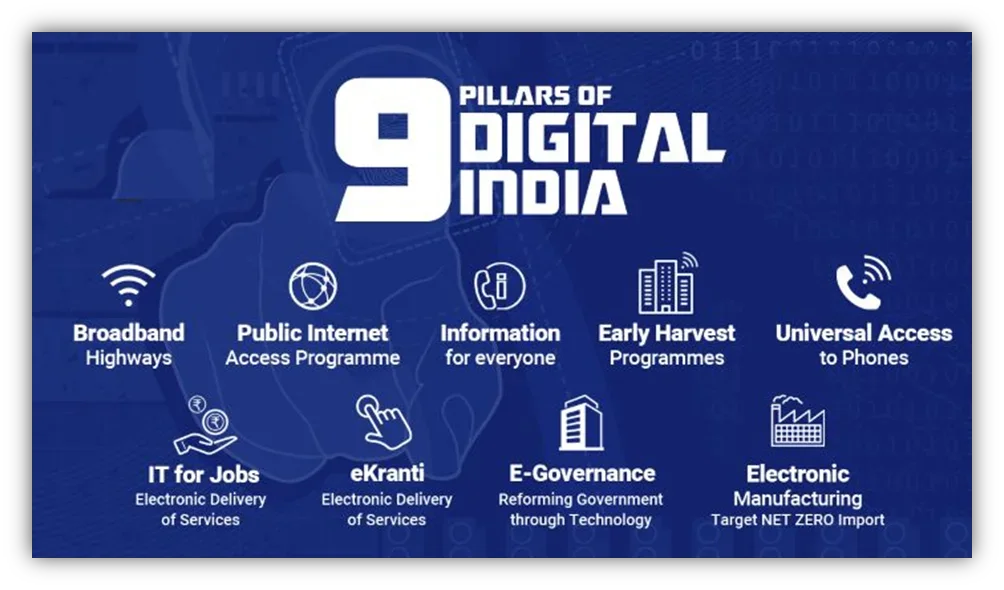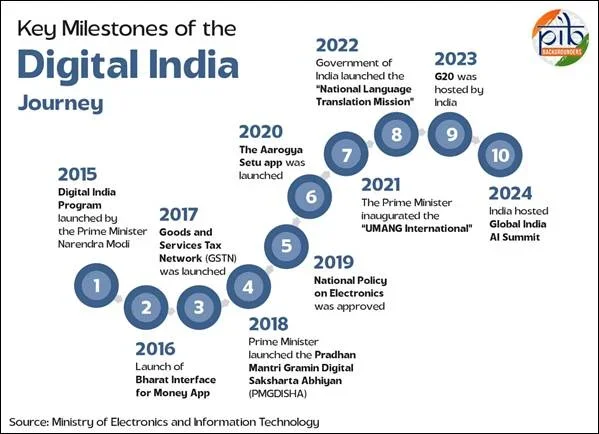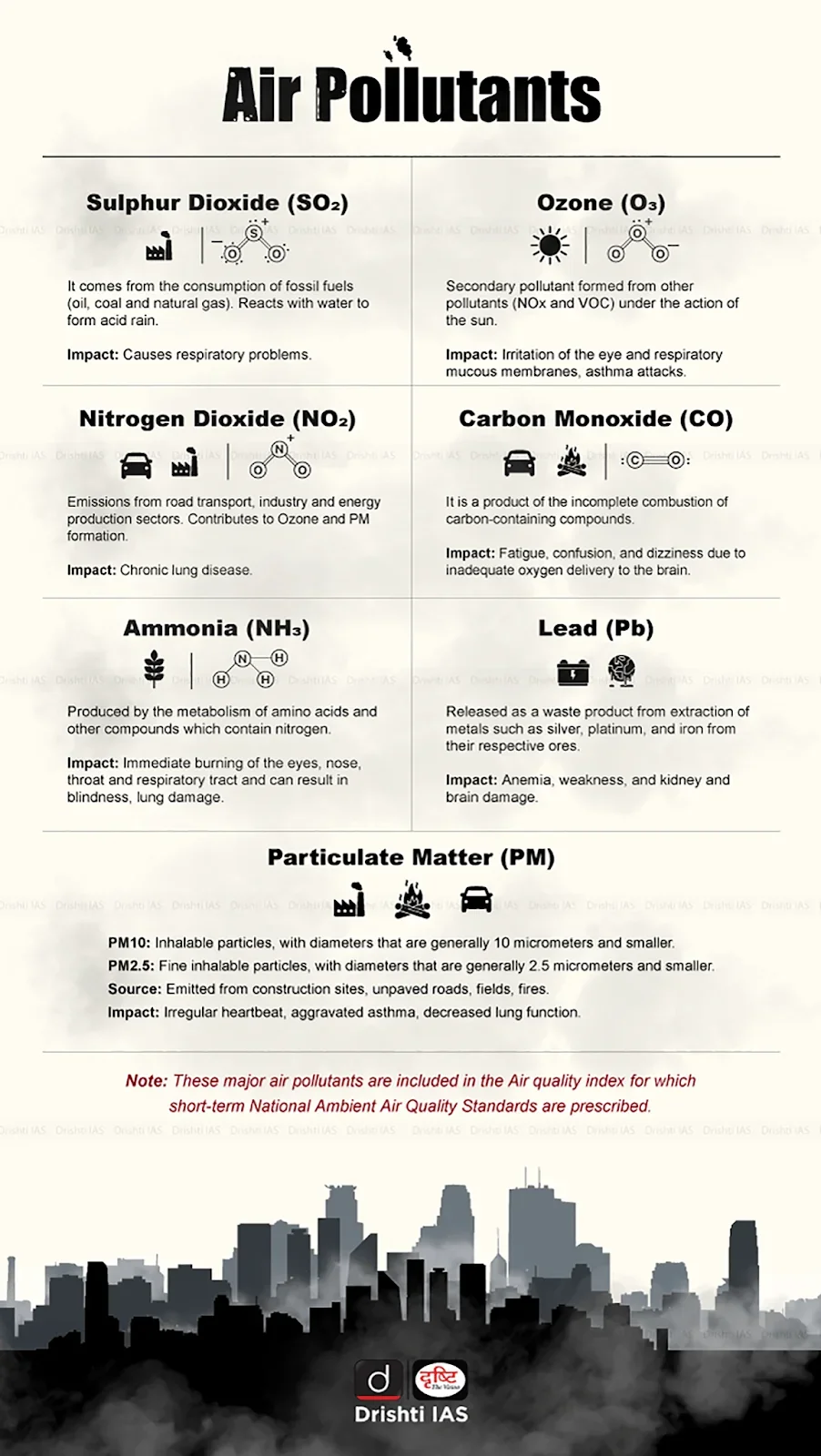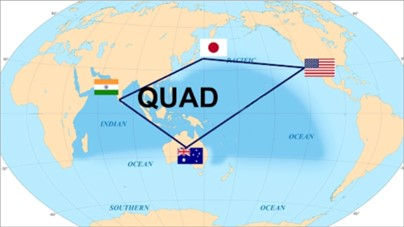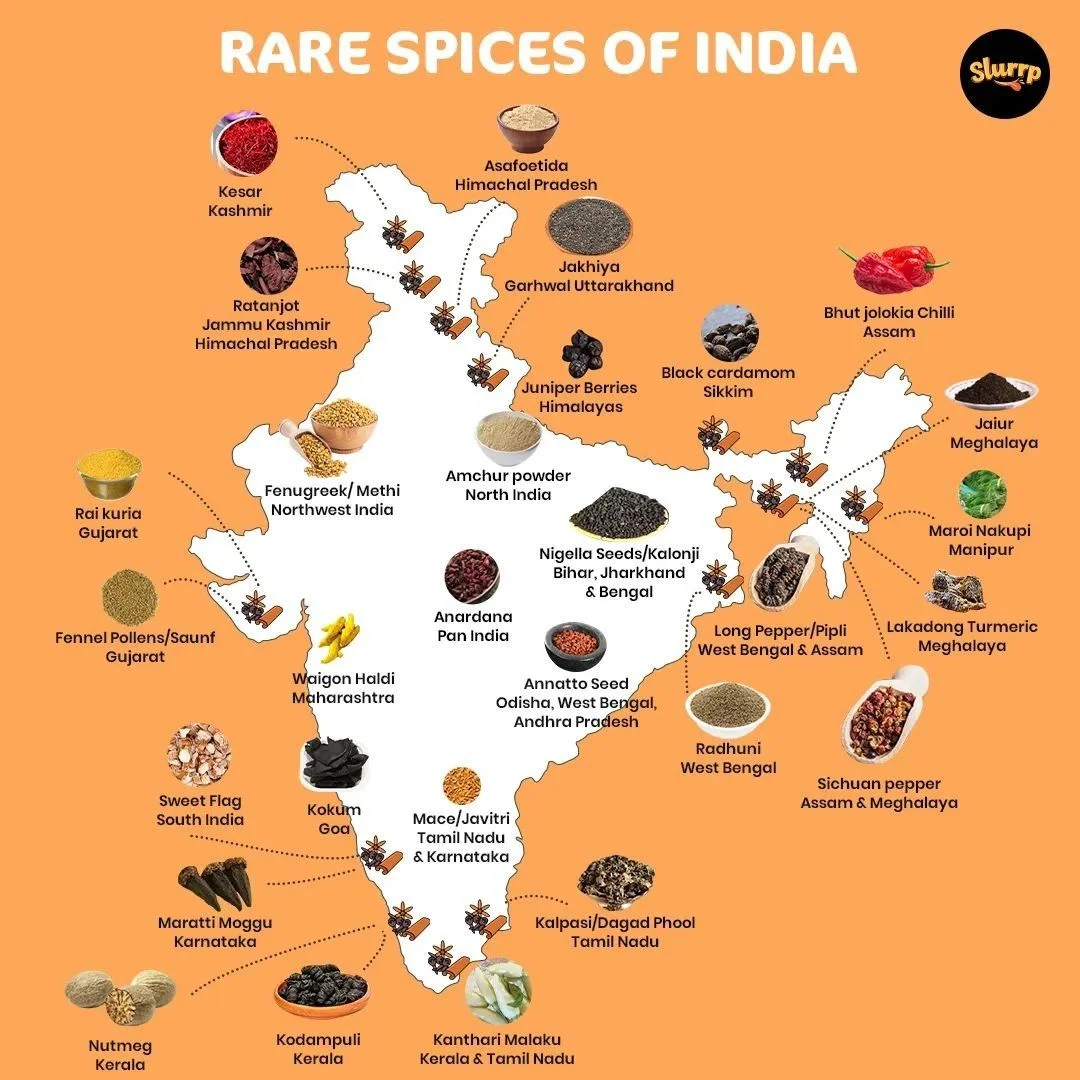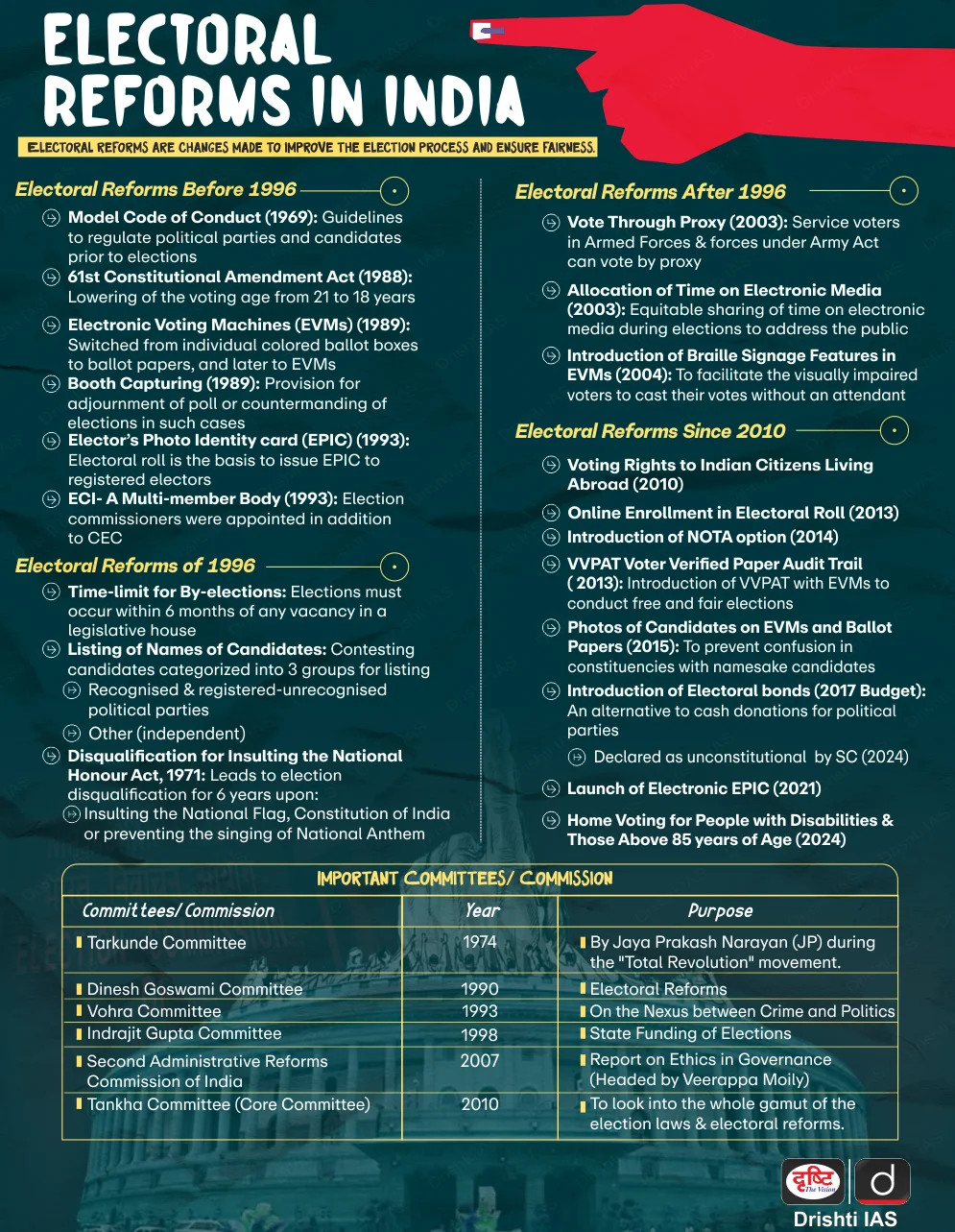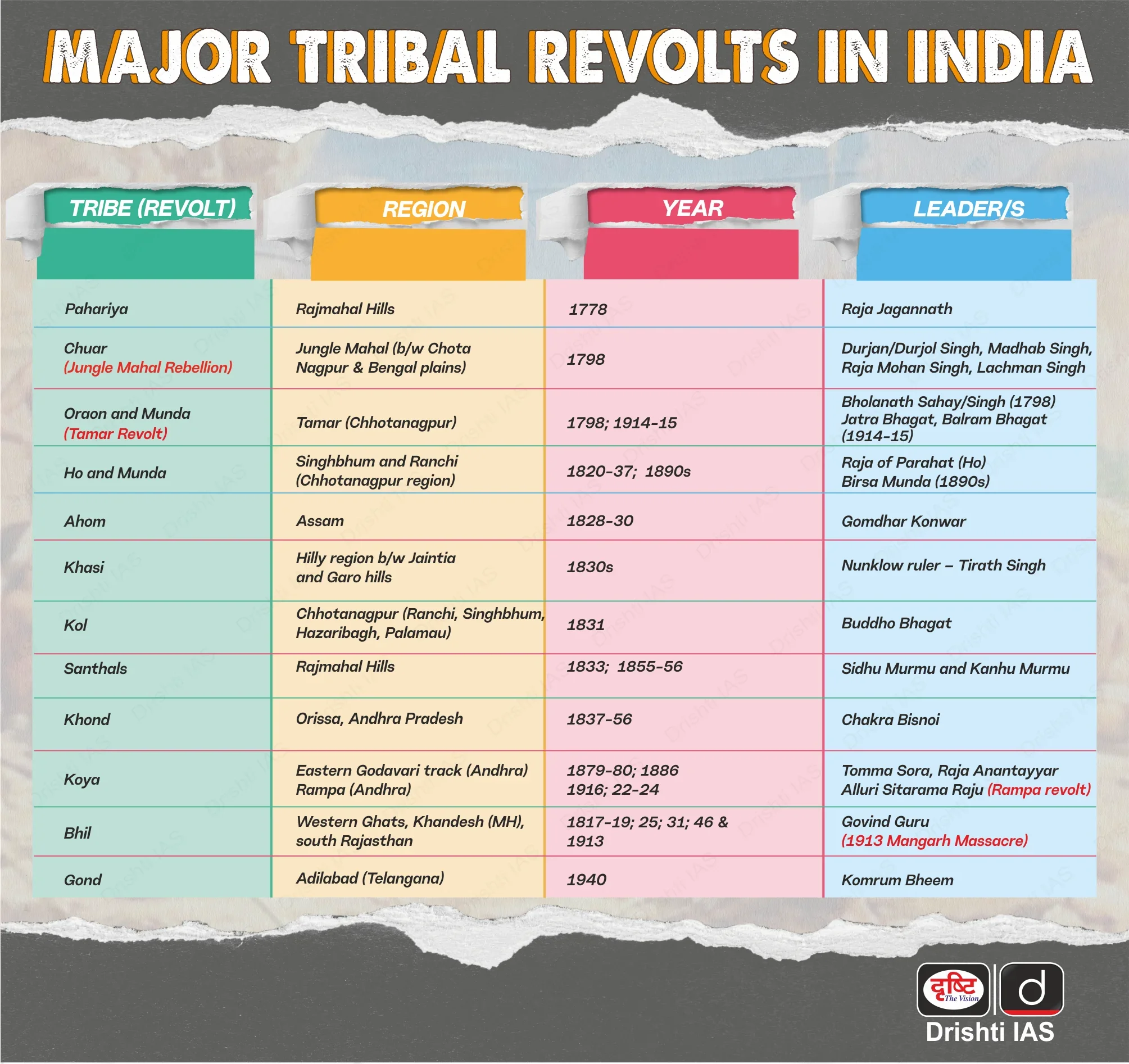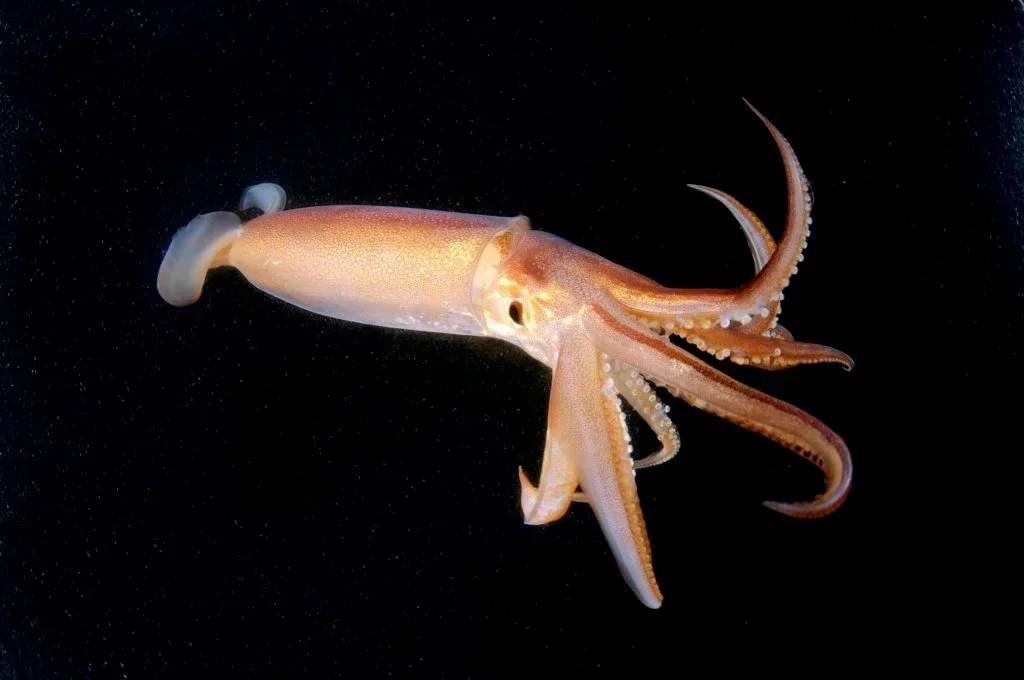10 Years of Digital India
For Prelims: Digital India, Financial Inclusion, Digital Infrastructure, Optical Fibre, UPI, Aadhaar, Open Network for Digital Commerce (ONDC), Government e-Marketplace (GeM), IndiaAI Mission (2024–29), India Semiconductor Mission, Karmayogi Bharat, iGOT, DigiLocker, UMANG App, BHASHINI, Common Service Centres, BharatNet, Digital Personal Data Protection (DPDP) Act, 2023, Cyber Surakshit Bharat, Skill India, PMGDISHA.
For Mains: Performance of Digital India, Key Issues Associated with Digital India and further measures needed to strengthen Digital India.
Why in News?
On 1st July 2025, India celebrated 10 years of Digital India, a flagship initiative launched in 2015 to bridge the digital divide and empower citizens through technology.
- Over the past decade (2015-25), Digital India has revolutionized internet access, governance, financial inclusion, and digital infrastructure, positioning India as the world’s third-largest digital economy.
What are Achievements of Digital India Since its Launch?
- Digital Infrastructure:
- Telecom & Internet Growth: Between 2014 and 2025, telephone connections rose from 93.3 crore to 120 crore (with tele-density increasing from 75.23% to 84.49%), while internet users grew by 285% and broadband connections surged by 1,452%.
- 5G Revolution: In just 22 months, 4.74 lakh 5G towers were installed, covering 99.6% of districts, while data costs fell sharply from Rs 308/GB (2014) to Rs 9.34/GB (2022).
- BharatNet for Rural India: 2.18 lakh Gram Panchayats have been connected through 6.92 lakh km of optical fibre, and 4G connectivity now reaches 6,15,836 villages across India.
- Digital Finance:
- Unified Payments Interface (UPI): As of April 2025, UPI facilitated 1,867.7 crore transactions worth Rs 24.77 lakh crore, accounting for 49% of global real-time transactions (2023); it is now operational in 7+ countries.
- Aadhaar & Direct Benefit Transfer (DBT): By April 2025, 142 crore Aadhaar IDs had been generated, enabling Rs 44 lakh crore to be transferred via DBT, which removed 5.87 crore fake ration cards and 4.23 crore duplicate LPG connections.
- ONDC & GeM: By 2025, the Open Network for Digital Commerce (ONDC) had onboarded lakhs of sellers, while the Government e-Marketplace (GeM) has over 22.5 lakh sellers and 1.6 lakh government buyers.
- AI and Semiconductors: The IndiaAI Mission (2024–29) has deployed over 34,000 GPUs by May 2025 to boost AI innovation, compute capacity, startups, and ethical AI frameworks, anchored by pillars like IndiaAI Innovation Centre, AIKosh, FutureSkills, and Safe & Trusted AI.
- The India Semiconductor Mission supports chip and display manufacturing with 50% capital assistance; 6 projects worth Rs 1.55 lakh crore have been approved (5 under construction).
- Citizen Empowerment: Karmayogi Bharat and iGOT have on boarded 1.21 crore officials, issuing 3.24 crore learning certificates, while platforms like DigiLocker (with 53.92 crore users) and the UMANG App (offering 2,300+ services in 23 languages with 8.34 crore users) have enhanced digital access and governance.
What is the Digital India Initiative?
- About: Digital India initiative was launched on 1st July 2015, to transform India into a digitally empowered society and knowledge-based economy by strengthening digital infrastructure, ensuring digital delivery of services, and promoting financial inclusion.
- Objective:
- Bridging the Digital Divide: Digital India aims to reduce the gap between digitally empowered citizens and those with limited access to technology.
- Ensuring Inclusive Digital Access: It promotes equal participation in the digital ecosystem, enabling access to education, healthcare, and government services for all.
- Driving Economic Growth: By leveraging technology and innovation, the initiative supports nationwide economic development.
- Improving Quality of Life: It seeks to raise living standards by integrating technology into key areas of daily life.
- Nine Pillars of Digital India Initiative:
- Broadband Highways: It aims to expand high-speed internet nationwide for better connectivity.
- Universal Mobile Access: It ensures mobile coverage in remote areas to boost digital inclusion.
- Public Internet Access: It sets up Common Service Centres in underserved regions to improve affordable access and digital literacy.
- E-Governance: It streamlines government services for better efficiency, transparency, and citizen engagement.
- E-Kranti: It delivers government services online via platforms like MyGov.in enhancing accessibility.
- Information for All: It promotes digitisation of records and open data for innovation.
- Electronics Manufacturing: It boosts local production, reducing imports and creating jobs.
- IT for Jobs: It builds youth IT skills through missions like Digital Literacy and Skill India.
- Early Harvest Programs: It addresses urgent digital needs like online certificates, digital attendance, and public Wi-Fi.
- Digital India Initiatives: Aadhaar (unique 12-digit biometric IDs), BharatNet (high-speed broadband to rural areas), Digital Locker (secure cloud storage of documents), BHIM UPI (secure digital payments), eSign (online document signing using digital signatures), MyGov (citizen participation in governance) etc.
- Key Milestones:
What are the Key Issues Associated with the Digital India Initiative?
- Digital Divide: India’s digital growth remains uneven, with rural internet penetration and digital literacy at only 37% (2023), highlighting stark gaps across regions and socio-economic groups.
- Cybersecurity Threats: Rising digital use has led to 13.91 lakh cyber security incidents (2022), but India faces a 8 lakh cyber security professional shortage, exposing weak cyber defenses.
- Data Privacy: Despite the Digital Personal Data Protection (DPDP) Act, 2023, concerns persist over enforcement and data misuse, with 61% of companies reportedly breaching consent norms.
- Infrastructure Bottlenecks: Low broadband speeds, patchy 5G, and poor fiber-optic coverage, especially in remote areas, limit digital access; India ranks 25th in mobile internet speed (2024).
- Regulatory Challenges: Frequent policy shifts, overlapping jurisdictions, and delays in spectrum auctions hinder 5G rollout and burden businesses with data localization costs.
- Public Digital System Issues: Platforms like CoWIN and Aadhaar face scalability, accuracy, and fraud challenges, especially in non-urban areas.
- Environmental Impact: Digital growth has increased e-waste from 1.01 MT (2019–20) to 1.751 MT (2023–24), worsened by weak e-waste management and high energy use in data centers.
What Measures can be Adopted to Further Strengthen the Digital India Initiative?
- Bridging the Digital Divide: Expand digital infrastructure in rural areas through BharatNet and PM-WANI, subsidize devices, and promote regional language content to boost access.
- Mandate assistive tech, support affordable internet, and integrate Accessible India with Digital India for marginalized groups.
- Enhancing Cybersecurity: Develop a comprehensive strategy, expand Cyber Surakshit Bharat, train professionals under Skill India, and support indigenous cybersecurity R&D via PLI schemes.
- Strengthening Data Privacy: Effectively enforce the DPDP Act, 2023, establish regional data protection offices, and clarify data localization guidelines.
- Promoting Digital Literacy: Extend PMGDISHA to cover cyber awareness and skills training, using community champions for outreach.
- E-Waste Management: Create a national framework linking Swachh Bharat to e-waste collection, support green startups, and extend PLI to eco-friendly tech.
- Integrating Digital Public Goods: Link platforms like Aadhaar, UPI, and DigiLocker to improve service delivery and reduce bureaucratic delays.
Conclusion
In its 10-year journey, Digital India has revolutionised service delivery, economic empowerment, and citizen participation. However, challenges like the digital divide, cybersecurity, and data privacy persist. With strategic reforms, inclusive infrastructure, and robust regulation, Digital India can become the cornerstone of Viksit Bharat, enabling equitable and sustainable digital growth.
|
Drishti Mains Question: Q. Digital India has bridged technological gaps but faces persistent challenges. Critically analyze this statement with reference to India’s digital transformation (2015–2025). |
UPSC Civil Services Examination Previous Year Question (PYQ)
Prelims
Q. Consider the following: (2022)
- Aarogya Setu
- CoWIN
- DigiLocker
- DIKSHA
Which of the above are built on top of open-source digital platforms?
(a) 1 and 2 only
(b) 2, 3 and 4 only
(c) 1, 3 and 4 only
(d) 1, 2, 3 and 4
Ans: (d)
Q. Which of the following is/are the aim/aims of “Digital India” Plan of the Government of India? (2018)
- Formation of India’s own Internet companies like China did.
- Establish a policy framework to encourage overseas multinational corporations that collect Big Data to build their large data centres within our national geographical boundaries.
- Connect many of our villages to the Internet and bring Wi-Fi to many of our schools, public places and major tourist centres.
Select the correct answer using the code given below:
(a) 1 and 2 only
(b) 3 only
(c) 2 and 3 only
(d) 1, 2 and 3
Ans: (b)
Q. Regarding ‘DigiLocker’, sometimes seen in the news, which of the following statements is/are correct? (2016)
- It is a digital locker system offered by the Government under Digital India Programme.
- It allows you to access your e-documents irrespective of your physical location.
Select the correct answer using the code given below:
(a) 1 only
(b) 2 only
(c) Both 1 and 2
(d) Neither 1 nor 2
Ans: (c)
Mains
Q. “The emergence of the Fourth Industrial Revolution (Digital Revolution) has initiated e-Governance as an integral part of government”. Discuss. (2020)
Q. How can the ‘Digital India’ programme help farmers to improve farm productivity and income? What steps has the Government taken in this regard? (2015).
India's Air Pollution Crisis
Why in News?
A recent study revealed that secondary pollutants, particularly ammonium sulphate (sulphur dioxide (SO₂) + ammonia (NH₃)), contribute to nearly one-third of India’s PM2.5 pollution highlighting the urgent need for air pollution controls.
- Over 60% of SO₂ emissions in India come from coal-fired power plants, yet only 8% have installed mandatory Flue Gas Desulphurisation (FGD) systems, key to controlling secondary PM2.5 pollution.
What are Key Facts Regarding Air Pollution?
- About: Air pollution is caused by chemical, physical, or biological substances including noise that disturb the air’s natural composition, mainly from combustion, vehicles, industries, and fires.
- Key pollutants like PM, CO, O₃, NO₂, and SO₂ are associated with serious respiratory diseases and higher mortality rates.
- Types of Pollutants: They are divided into two types based on how they exist in the environment after being released.
- Primary Pollutants: They remain in the same form as they were released into the environment, such as DDT, plastic, carbon monoxide (CO), carbon dioxide (CO₂), and oxides of nitrogen and sulphur.
- Secondary Pollutants: They are produced through reactions between primary pollutants. For instance, peroxyacetyl nitrate (PAN) is formed by the interaction of nitrogen oxides and hydrocarbons.
- Particulate Pollutants: Particulate pollutants (also called particulate matter or PM) are tiny solid or liquid particles suspended in the air that can be harmful to human health and the environment.
- PM10: Particles with a diameter of 10 micrometers or less. E.g., dust, pollen, mold etc.
- PM2.5: Particles with a diameter of 2.5 micrometers or less. E.g., Vehicle emissions, industrial processes, power plants etc.
- Measures Taken to Control Air Pollution:
What is Flue Gas Desulphurisation (FGD)?
- About: Flue Gas Desulphurisation (FGD) is a process that removes sulphur dioxide (SO₂) from flue gas emitted during the combustion of fossil fuels like coal and oil.
- It is mainly used in coal-fired power plants, using reagents such as limestone (CaCO₃), lime (CaO), and ammonia (NH₃).
- Purpose: Coal contains sulphur, and its combustion releases SO₂, causing acid rain. FGD cleans exhaust gases, preventing acid rain and protecting crops, infrastructure, soil, and aquatic ecosystems.
- Types: FGD systems are mainly of three main types:
- Dry Sorbent Injection: It involves using limestone to remove SO₂ before it reaches dust control systems and is known for its simplicity and dry operation.
- Wet Limestone System: It is ideal for large-scale applications, offering high SO₂ removal efficiency and producing useful gypsum as a byproduct.
- Seawater-Based System: It uses alkaline seawater to cut SO₂ emissions by 70–95%, suitable where emission standards are relaxed and initial costs are low.
UPSC Civil Services Examination Previous Year Question (PYQ)
Prelims
Q. Which of the following are the reasons/factors for exposure to benzene pollution? (2020)
- Automobile exhaust
- Tobacco smoke
- Wood burning
- Using varnished wooden furniture
- Using products made of polyurethane
Select the correct answer using the code given below:
(a) 1, 2 and 3 only
(b) 2 and 4 only
(c) 1, 3 and 4 only
(d) 1, 2, 3, 4 and 5
Ans: (a)
Q. In the context of solving pollution problems, what is/are the advantage/advantages of bioremediation techniques? (2017)
- It is a technique for cleaning up pollution by enhancing the same biodegradation process that occurs in nature.
- Any contaminant with heavy metals such as cadmium and lead can be readily and completely treated by bioremediation using microorganisms.
- Genetic engineering can be used to create microorganisms specifically designed for bioremediation.
Select the correct answer using the code given below:
(a) 1 only
(b) 2 and 3 only
(c) 1 and 3 only
(d) 1, 2 and 3
Ans: (c)
QUAD At Sea Ship Observer Mission
Why in News?
The Coast Guards of QUAD nations (India, Japan, the United States, and Australia) launched the ‘QUAD At Sea Ship Observer Mission’ in line with the Wilmington Declaration (2024) adopted during the 6th QUAD Summit (4th in-person Quad Leaders' Summit) held in Delaware, USA.
What is QUAD At Sea Ship Observer Mission?
- About: It is a first-of-its-kind maritime cooperation initiative aimed at strengthening interoperability, maritime domain awareness (MDA), and operational coordination to uphold a rules-based order in the Indo-Pacific.
- As part of the cross-embarkation initiative, officers, including women officers, are deployed aboard partner nations’ Coast Guard vessels (currently the USCGC Stratton, sailing to Guam).
- Objective: The mission focuses on joint training in Standard Operating Procedures (SOPs), patrolling, and search and rescue (SAR) operations, while promoting maritime diplomacy, gender inclusion, and aligning with India’s SAGAR Vision, MAHASAGAR Doctrine (Mutual and Holistic Advancement for Security and Growth Across Regions) and the Indo-Pacific Oceans Initiative (IPOI).
What is the Wilmington Declaration?
- About: The Wilmington Declaration is a joint statement adopted at the QUAD Leaders’ Summit held in Wilmington, USA, in September 2024.
- It outlines the QUAD’s shared vision for a Free, Open, Inclusive, and Rules-Based Indo-Pacific, reaffirming the grouping as a “force for good”, highlighting deeper alignment on strategic, security, health, technological, and economic cooperation across the region.
- Key Highlights of Declaration
- Indo-Pacific & Maritime Security: Reaffirmed commitment to a free, open Indo-Pacific, launched QUAD At Sea Ship Observer Mission and MAITRI for interoperability and maritime domain awareness.
- Infrastructure & Connectivity: Initiated Quad Logistics Network, Ports of the Future Partnership, and expanded fellowships to 2,200+ experts.
- Technology & Cybersecurity: Strengthened cooperation on semiconductors, supply chains, and cybersecurity through Quadrilateral Information-Sharing Network (QUIN).
- Climate, Space & People-to-People Ties: Implemented Q-CHAMP (Quad Climate Change Adaptation & Mitigation Package), promoted Earth Observation for disaster response, and expanded Quad Fellowship for leadership in science and policy.
What is the QUAD?
- About: The Quadrilateral Security Dialogue (QUAD) is a strategic forum comprising India, Australia, Japan, and the United States, aimed at ensuring peace, stability, and prosperity in the Indo-Pacific region.
- It promotes a free, open, inclusive, and rules-based order, while enhancing regional resilience and cooperation.
- Origin: The Quad originated in the aftermath of the 2004 Indian Ocean tsunami, where India, Japan, the US, and Australia coordinated humanitarian assistance.
- It was formally proposed in 2007 by Japanese PM Shinzo Abe, but became inactive following Australia’s withdrawal in 2008 due to Chinese pressure. The dialogue was revived in 2017 amid rising concerns over China’s assertiveness in the Indo-Pacific, leading to the first Leaders’ Summit in 2021.
- Objectives: It aims to address regional and global challenges through cooperation in health, climate and clean energy, infrastructure, emerging technologies, cybersecurity, maritime security, counter-terrorism, and Humanitarian Assistance and Disaster Relief (HADR).
- Expansion Potential: “QUAD-plus” meetings have included nations like South Korea, New Zealand, and Vietnam, indicating potential for future expansion.
UPSC Civil Services Examination Previous Year Question (PYQ)
Prelims
Q. With reference to the ‘Trans-Pacific Partnership’, consider the following statements: (2016)
- It is an agreement among all the Pacific Rim countries except China and Russia.
- It is a strategic alliance for the purpose of maritime security only.
Which of the statements given above is/are correct?
(a) 1 only
(b) 2 only
(c) Both 1 and 2
(d) Neither 1 nor 2
Ans: D
Inauguration of National Turmeric Board in Nizamabad
The Union Home Minister inaugurated the National Turmeric Board in Nizamabad, Telangana, to develop a complete value chain for turmeric, including packaging, branding, marketing, and export.
- Operating under the Ministry of Commerce and Industry, the board aims to reduce middlemen, promote GI-tagged organic turmeric, and train farmers in best practices.
- Previously, the Spices Board managed turmeric promotion along with over 50 other spices.
Turmeric
- About: Turmeric is an underground stem (rhizome) of the Curcuma longa plant, which is part of the ginger family (Zingiberaceae).
- Curcumin, the active compound in turmeric, gives it its yellow color and is known for its anti-inflammatory, antioxidant, and antimicrobial benefits.
- Cultivation: India cultivates 30+ turmeric varieties across 20+ states, with major producers being Maharashtra, Telangana, Karnataka, and Tamil Nadu.
- Turmeric requires a tropical climate with 20–30°C temperature, 1500+ mm annual rainfall, and well-drained sandy or clay loam soils for optimal growth.
- Global Standing: India is the world’s largest producer, consumer, and exporter of turmeric.
- In 2022–23, it contributed over 75% of global production and held a 62% share in global exports.
- Export Data: India exported turmeric and related products worth USD 207.45 million in 2022–23, mainly to Bangladesh, UAE, USA, and Malaysia, and aims to reach USD 1 billion in turmeric exports by 2030.
- GI Tags: GI-certified varieties include Lakadong turmeric (Meghalaya), Kandhamal turmeric (Odisha), Erode turmeric (Tamil Nadu).
- Health Benefits: Curcumin helps in reducing inflammation, fighting oxidative stress, and aiding digestion by enhancing bile production, making turmeric significant in traditional and modern medicine.
| Read More: National Turmeric Board |
India's First Mobile E-Voting in Bihar
Bihar became the first Indian state to pilot mobile phone-based e-voting in municipal elections using the E-SECBHR app developed by C-DAC. The initiative aimed to improve voting access for senior citizens, pregnant women, and persons with disabilities.
- To ensure security and transparency, the system used blockchain technology, facial recognition, biometric scanning, voter ID verification, and limited 2 voters per mobile number.
Recent ECI Electoral Reforms & Privacy Safeguards
- Restriction on Public Access to Polling Booth CCTV Footage: The Election Commission of India (ECI) has restricted public access to CCTV, webcast, and videography footage of polling stations citing voter privacy and security. As per new rules:
- Destruction of footage is mandated 45 days after result declaration, unless a petition is filed.
- Footage can only be submitted to a High Court hearing an election petition & no other authority or individual may access it as public release may violate Section 128 of the Representation of People Act, 1951 (secrecy of voting) and Supreme Court rulings that uphold ballot secrecy.
- ECI clarified that videography is not legally mandated, and is used only as an internal management tool.
- In December 2024, Rule 93(2)(a) of the Conduct of Election Rules, 1961 was amended to exclude CCTV and electronic footage from public inspection.
- New Voter-Friendly Measures: In bye-elections across 5 Assembly Constituencies, ECI introduced new initiatives to improve transparency and voter convenience, including:
- Mobile deposit facility for voters
- Real-time voter turnout reporting via the ECINET App
- 100% webcasting (except one station)
- Individual mock poll training for all Presiding Officers
- Conducted Special Summary Revision (SSR) to revise the electoral rolls, for the first time in nearly 20 years.
| Read More: Electoral Reforms in India |
Hul Diwas
The Prime Minister paid a heartfelt tribute on Hul Diwas (30th June), commemorating the start of the Santhal uprising and honoring the legacy of Sido-Kanhu, Chand-Bhairav, Phulo-Jhano, and other tribal martyrs who resisted colonial oppression.
Santhal Uprising
- About: Santhal Hul was a tribal revolt and India’s first structured war against British oppression, launched in 1855, two years before the 1857 Revolt, aimed at resisting economic exploitation and land alienation.
- Leaders & Unity: Led by Sidhu and Kanhu, the revolt united 32 castes/communities, showcasing rare tribal solidarity against colonial forces.
- Roots of Rebellion: It was sparked by the 1832 Damin-i-Koh settlement in the Rajmahal hills, where Santhals (displaced from Bengal) faced land-grabbing, bonded labour (kamioti/harwahi), and systemic oppression by British-backed zamindars.
- Impact: It led to the passage of Santhal Parganas Tenancy Act, 1876 (SPT Act) and later Chota Nagpur Tenancy Act, 1908 (CNT Act).
- The SPT Act (1876) prohibits transfer of Adivasi land to non-Adivasis, ensuring Santhal land rights, while the CNT Act (1908) restricts sale of Adivasi and Dalit land, allowing transfers only within the same caste and area with Collector's approval.
Santhal Tribe
- About: Originally from Birbhum and Manbhum (now West Bengal), Santhals migrated due to the 1770 Bengal famine and British policies, later settling in Damin-i-Koh (Jharkhand) under the Permanent Settlement Act (1790) for revenue farming.
- Demographics: Santhals are India’s 3rd-largest Scheduled Tribe (after Gonds and Bhils), mainly residing in Jharkhand, Bihar, Odisha, and West Bengal.
- Culture & Religion: They celebrate agriculture-linked festivals like Sohrai, Baha, and Karam, speak Santhali (8th Schedule language), and use the Ol Chiki script.
| Read More: Santhal Hul of 1855 |
Digital Fossil-Mining and Evolution of Squids
Using digital fossil-mining techniques, scientists have uncovered that squids dominated ancient oceans 30 million years earlier than previously believed, shedding new light on their deep evolutionary history.
- Researchers digitally identified at least 40 species from two modern squid groups—Oegopsida (deep-sea squids) and Myopsida (coastal squids)—in 110–70 million-year-old Cretaceous concretions found in Japan.
- Digital fossil-mining involves using technologies like 3D scanning, CT imaging, AI, and GIS to extract and analyze fossil data without damaging original fossils.
Squids
- About: Squids, belonging to the Cephalopod class (with octopuses and cuttlefish), have a soft mantle, an internal shell (gladius), a parrot-like beak, two tentacles for capturing prey, and eight arms for holding it.
- Like all cephalopods, they have three hearts and use jet propulsion for movement.
- Habitat Diversity: Squids are found worldwide, from shallow coasts to 3 miles deep, and range in size from tiny pygmy squids to giant squids with the largest eyes in the animal kingdom (volleyball-sized).
- Behavior and Intelligence: Squids are among the most intelligent invertebrates, using chromatophores for camouflage, communication, and predator evasion.
- They can ink-spray, and detach arm-tips for distraction, and show social behaviors like cooperative hunting (Humboldt squid) and mate guarding.
- Technological Contributions: They inspired color-changing materials, eco-friendly self-healing packaging, and bio-inspired robotics.
- Uniqueness: Some squids can “fly” by gliding up to 164 feet, show parental care (e.g., bigfin reef squid), and mimic prey to lure food.
| Read More: Conservation of Cephalopods |

